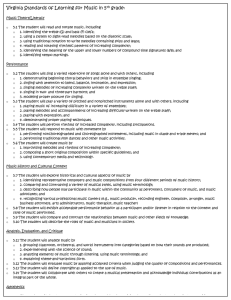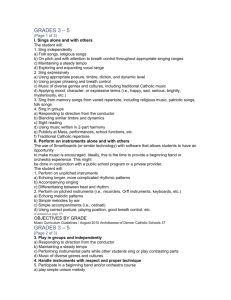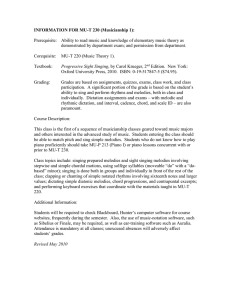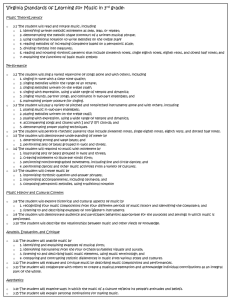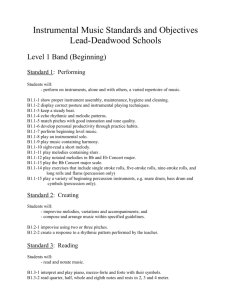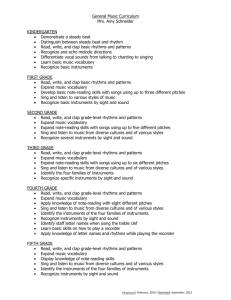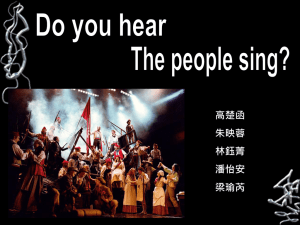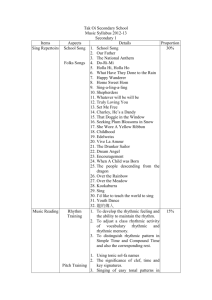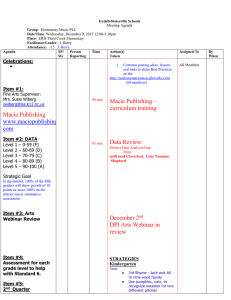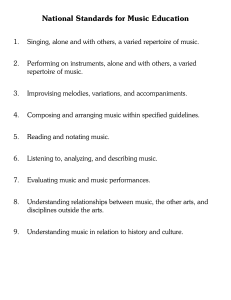Eli Pinney Elementary School General Music Education Music Curriculum
advertisement
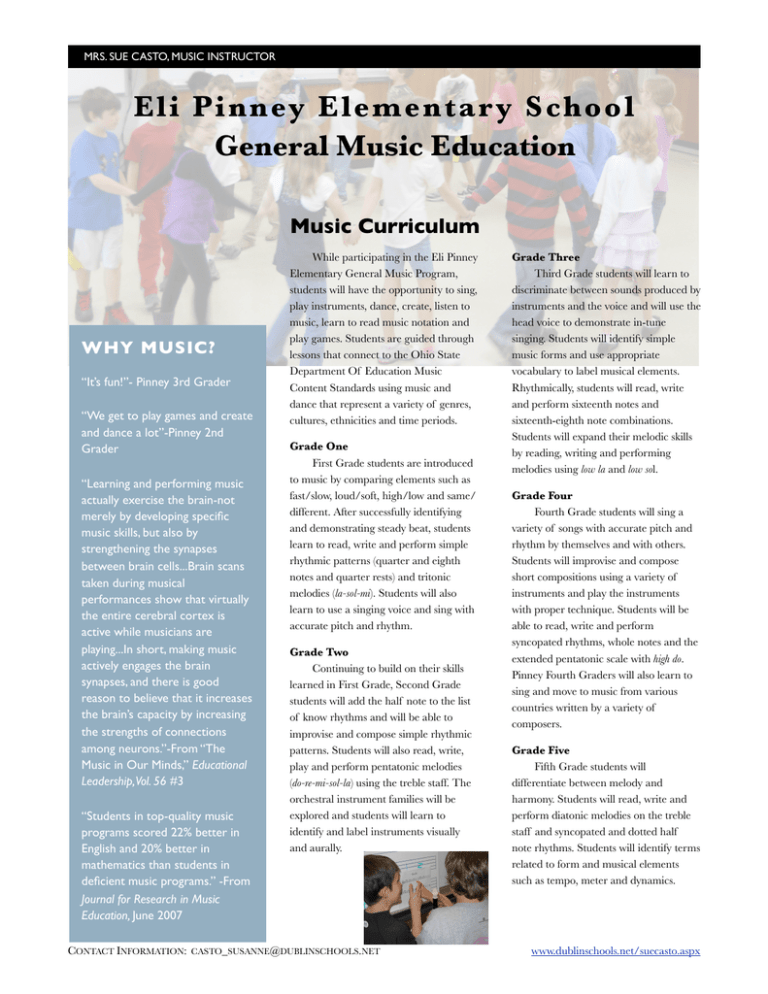
MRS. SUE CASTO, MUSIC INSTRUCTOR Eli P i n n ey Ele m e n tar y Sch ool General Music Education Music Curriculum WHY MUSIC? “It’s fun!”- Pinney 3rd Grader “We get to play games and create and dance a lot”-Pinney 2nd Grader “Learning and performing music actually exercise the brain-not merely by developing specific music skills, but also by strengthening the synapses between brain cells...Brain scans taken during musical performances show that virtually the entire cerebral cortex is active while musicians are playing...In short, making music actively engages the brain synapses, and there is good reason to believe that it increases the brain’s capacity by increasing the strengths of connections among neurons.”-From “The Music in Our Minds,” Educational Leadership,Vol. 56 #3 “Students in top-quality music programs scored 22% better in English and 20% better in mathematics than students in deficient music programs.” -From Journal for Research in Music Education, June 2007 While participating in the Eli Pinney Elementary General Music Program, students will have the opportunity to sing, play instruments, dance, create, listen to music, learn to read music notation and play games. Students are guided through lessons that connect to the Ohio State Department Of Education Music Content Standards using music and dance that represent a variety of genres, cultures, ethnicities and time periods. Grade One First Grade students are introduced to music by comparing elements such as fast/slow, loud/soft, high/low and same/ different. After successfully identifying and demonstrating steady beat, students learn to read, write and perform simple rhythmic patterns (quarter and eighth notes and quarter rests) and tritonic melodies (la-sol-mi). Students will also learn to use a singing voice and sing with accurate pitch and rhythm. Grade Two Continuing to build on their skills learned in First Grade, Second Grade students will add the half note to the list of know rhythms and will be able to improvise and compose simple rhythmic patterns. Students will also read, write, play and perform pentatonic melodies (do-re-mi-sol-la) using the treble staff. The orchestral instrument families will be explored and students will learn to identify and label instruments visually and aurally. CONTACT INFORMATION: CASTO_SUSANNE@DUBLINSCHOOLS.NET Grade Three Third Grade students will learn to discriminate between sounds produced by instruments and the voice and will use the head voice to demonstrate in-tune singing. Students will identify simple music forms and use appropriate vocabulary to label musical elements. Rhythmically, students will read, write and perform sixteenth notes and sixteenth-eighth note combinations. Students will expand their melodic skills by reading, writing and performing melodies using low la and low sol. Grade Four Fourth Grade students will sing a variety of songs with accurate pitch and rhythm by themselves and with others. Students will improvise and compose short compositions using a variety of instruments and play the instruments with proper technique. Students will be able to read, write and perform syncopated rhythms, whole notes and the extended pentatonic scale with high do. Pinney Fourth Graders will also learn to sing and move to music from various countries written by a variety of composers. Grade Five Fifth Grade students will differentiate between melody and harmony. Students will read, write and perform diatonic melodies on the treble staff and syncopated and dotted half note rhythms. Students will identify terms related to form and musical elements such as tempo, meter and dynamics. www.dublinschools.net/suecasto.aspx

